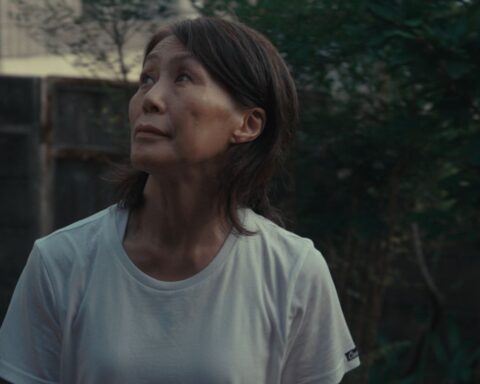Gaza
(Canada, 90 min.)
Dir. Garry Keane, Andrew McConnell
Programme: Special Presentations (Canadian Premiere)
25 miles long and seven wide, Gaza is a small territory with a huge international profile. Cut off from the outside world by strictly enforced borders, poverty-stricken, suffering explosions of horrendous violence, Gaza is frequently reported on as the embodiment of the tragic, seemingly unresolvable conflict between Israelis and Palestinians.
As others have pointed out, Keane and McConnell’s doc Gaza is neither a polemic taking one side or the other, nor an on camera debate. Few of the Palestinian characters directly address the historical, moral, and political issues behind the conditions of their lives. In a film totally focused on the Strip, no Israelis appear.
Keane and McConnell take you deeply into Gaza, its neighbourhoods, people, and daily rhythms and its suffering, its ruins. The documentary was filmed during the deadly May 2018 clashes between Israeli soldiers and Palestinian protestors, but doesn’t focus on them until the film’s violent climax.
Filmed by McConnell with sensitivity to light, colour, mood, camera placement and movement, Gaza reveals the beauties of the place, along with the overcrowded, littered streets. The film opens on a montage of vibrant daily life recalling other Middle-Eastern and North African locales. The camera tracks on a vegetable market, a horse drawn cart, (horses appear often), kids fighting and boys playing in a dramatically turbulent surf.
The Mediterranean is a through line in Gaza, a continual physical and symbolic presence. For many of the disparate characters the doc follows, the sea is simultaneously about aspiration, inspiration, sustenance, knowledge, and above all, freedom from the “open air prison” two million inhabitants feel they are trapped in. In reality, you can’t get onto a boat and sail away into another life, or even to where fish stocks are good. Fishermen who cross the imposed three-mile limit are confronted by gunboats, sprayed with sewage, and even locked up.
“Fishing is in my veins,” says 14-year old Ahmed, who dreams of owning his own boat. He loves the sea so much he sleeps on the beach. Gaza returns to Ahmed as it crosscuts between a representative array of people. A taxi driver who joins up some of the characters alternates between telling funny stories and how, debt-ridden, he spent 20 months in jail.
Like Ahmed, pretty 19-year-old Karma links her longing for freedom to the sea. She also feels liberated when she plays the cello. Meanwhile, other Palestinians remember a better time. An elderly tailor who lost a clothing factory with 80 employees can’t even make ends meet because his electricity cuts out after four hours.
A middle-aged woman remembers a cosmopolitan society where you could dress as you liked. Another woman who orchestrates fashion shows laments that if she could travel freely, she would be in demand all over Europe. The two women, like Karma and an intense actor-director we meet, are comfortably middle-class.
Naturally, their advantages don’t wipe out the pervasive sadness that one character laments. They all talk about being exhausted by war, about longing to be like the rest of the world, and about being better off dead. In one scene Karma says, “The only thing they give us is sympathy. They see what they want to see. They should look deeper.”
The movie builds toward bombs dropping, buildings riddled with bullet holes, and maimed bodies.
Some see this film on Gaza as ultimately propagandistic, rather than simply documenting the daily life of people struggling to survive their dire situation. On the other hand, violence is often part of their lives.
For sure, even though the old tailor says that as long as Hamas is in power, the conflict will never be resolved, nobody else even hints at its share of responsibility for Gaza’s misery. Nor do we see more than a few glimpses of armed warriors dedicated to destroying Israel.
Viewers will react to the documentary in different ways. But no one can deny how it beautifully and sensitively engages you in a world beyond whatever stereotyped pre-conceptions you may have.








